The year 2019 was another successful one for OSME. During the last 12 months we have seen a number of long-running key projects reach their completion and the launch of several new initiatives. All of these were only possible due to the increased generosity of OSME members and supporters. The donations we received reached an all-time high, allowing us to increase our Conservation Fund expenditure to record levels. After a period of slow but continued decline, our membership numbers stabilised and we welcome two new corporate members, Oriole Birding and Birdtour Asia.
The production of an Arabic version of the Field Guide to the Birds of the Middle East was completed this year with the launch of the free-to-download smartphone app for Android users. The Field Guide is now available as a book, and is freely available on both Apple and Android platforms. Funds have been set aside to help us maintain the both versions of the app for the next 10 years, and we will also be looking at the possibility of adding more sound recordings and other content such as video footage.
An assessment of the extent of illegal bird killing in the Arabian Peninsula, Iran and Iraq has been a major project for OSME, in collaboration with BirdLife International. The project was started in 2016 and the final research paper was published in Volume 41(2) of our journal Sandgrouse, and is freely available via our website. The final estimates were presented by me and Ibrahim Khader, Director of BirdLife Middle East, in August at a workshop on the illegal trade in birds of prey at the Abu Dhabi Hunting and Equestrian Exhibition (ADIHEX2019) in the United Arab Emirates. The project was widely reported in the local press and our associated post on the OSME Facebook page was the most shared article since our page was established, with 452 ’likes’, 63 comments and 602 shares, resulting in a total reach of just over 125,000 people. It is clearly an area of work that is popular with our members and supporters. During 2020, OSME will be continuing to work with BirdLife International to develop a plan of action to tackle this ongoing threat to the region’s birds which claims an estimated 1.7 – 4.6 million birds each year.
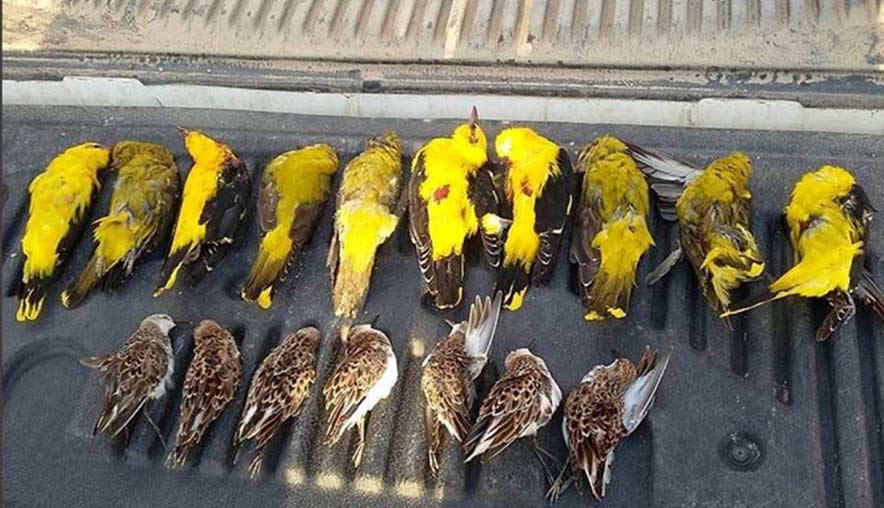
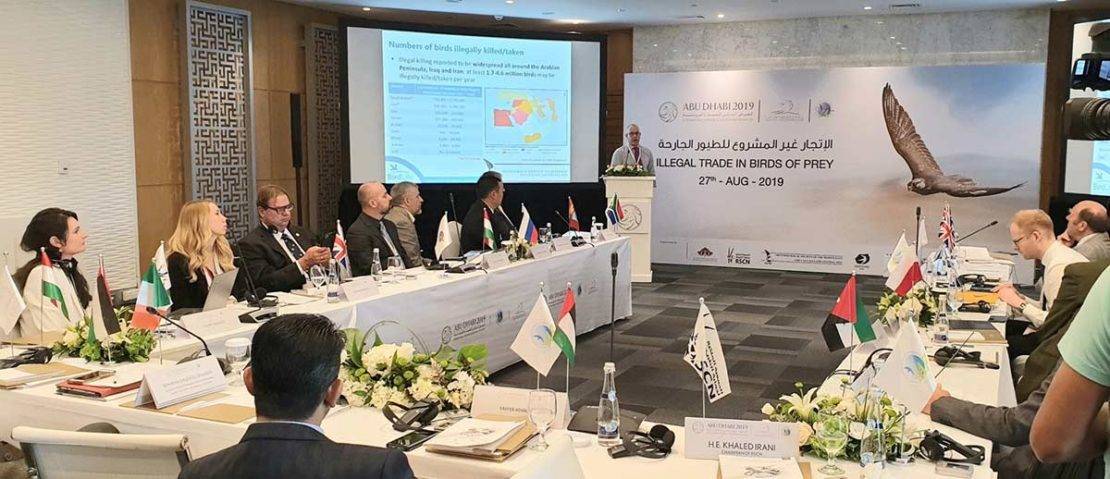
A key focus for OSME Council in recent years has been to try and increase the amount of funding we provide to conservation projects across the region. The number of projects we are asked to support each year exceeds our financial resources. In recent years there has been an increase in the number of project applications that focus on youth development and education. Council see the support of such projects as key to securing the next generation of birdwatchers and conservationists across the region. To help us expand our expenditure in this area, Council agreed to establish a dedicated small grants programme – the Youth Development Fund. This was announced at the 2019 Birdfair and will enable us to approach specific funders and trusts that focus on youth development and education. The fund is overseen by OSME’s Youth Development Officer, Tomas Haraldsson, who has been instrumental in developing bird camp initiatives. Whilst all the projects supported financially this year were in Lebanon, Tomas has been working up concepts for new bird camps in Egypt and northern Cyprus, as well as repeat camps in Azerbaijan and Lebanon. There is an ambitious programme of work coming in 2020! Three projects were supported by the Youth Development Fund in 2019:
- Spring bird camp in Lebanon: £1,000
- Autumn raptor migration count and bird camp in Lebanon: £2,250
- Developing eco-tourism in Lebanon: £1,177
The spring bird camp in Ras al-Maten, Lebanon, ran from the 5- 8 April and involved young Swedish birdwatchers and Lebanese students taking part in various activities such as bird-ringing demonstrations, bird-watching excursions, social events and visits by local schools. The exchange was such a success that four Lebanese students visited Sweden in August and spent two weeks at Ottenby and Falsterbo Bird Observatories (jointly funded by Birdlife Sweden and the Ras al-Maten community). The autumn raptor count and bird camp ran from 9 September to 3 October at a dedicated watch point near the town of Hammana. The aim was to get an updated estimate of the numbers of raptors and storks migrating through the area, as well as to train young Lebanese birdwatchers in raptor identification and counting techniques. This was an excellent collaborative project hosted by the local BirdLife partner, the Society for the Protection of Nature in Lebanon (SPNL) and co-funded by OSME, BirdLife Sweden and BirdLife Switzerland.
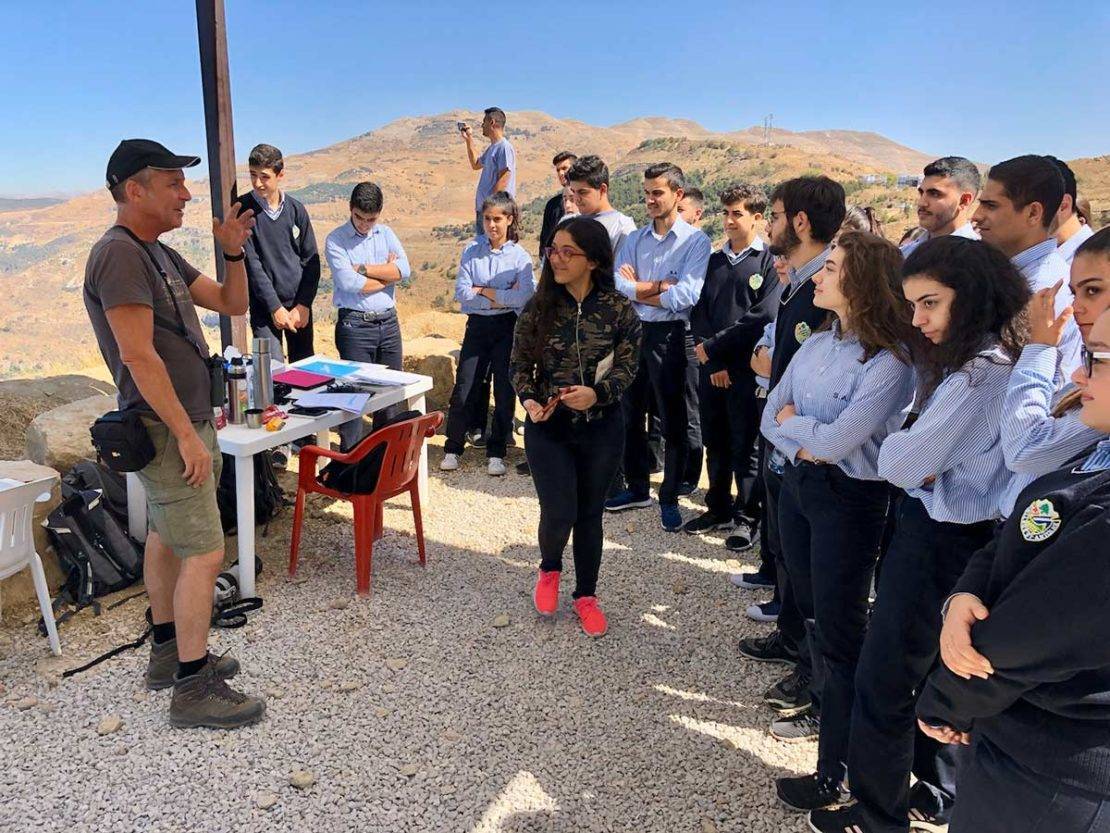
For the fifth year in a row we increased our expenditure through the OSME Conservation Fund to an impressive £19,124, up from £17,349 in 2018, and from £10,450 in 2015. Council were especially pleased to support our first OSME-funded project in Jordan. From the countries and territories that make up the OSME region, only Cyprus, Kuwait, Qatar and Turkmenistan are yet to receive project support via the Conservation Fund, and future applications from there would be especially welcome.
The Conservation Fund supported 11 projects during 2019:
- Breeding ecology of Turkestan Ground Jay, Uzbekistan: £1,900
- Strengthening the knowledge base of threatened eagle species of central Anatolia, Turkey: £2,000
- Building capacity of Talimarzhan Site Support Groups for the long-term protection of Sociable Lapwing, Uzbekistan: £2,800
- Documentation of special species in Jordan: £2,000
- Great Bustard year-round monitoring in the south of Kazakhstan: £1,000
- Family of websites for the development of birdwatching in countries of Central Asia: £1,715
- Gyzylagach Wader Project, Azerbaijan: £1,032
- Socotra environment events for International Vulture Awareness Day, Yemen: £1,635
- Assessing the status of breeding birds of the Son-kul Lake, Kyrgyzstan: £1,942
- Developing educational programmes for local communities to ensure safeguarding bird diversity in Qeshm Islands’s Hara Biosphere reserve, a Marine IBA in southern Iran: £1,600
- Monitoring Sociable Lapwing migration through Kumo-Manych depression, south-west Russia: £1,500
This continued growth in expenditure would not have been possible without the direct support of the March Conservation Fund of the Tides Foundation, who increased their financial contribution to US$20,000. A longstanding supporter, who wishes to remain anonymous, increased their donation to specifically help us launch the Youth Development Fund. All the project applications are reviewed by an independent Conservation Fund Committee which assesses each one and makes recommendations to Council for final approval. This year there were several changes on the committee with Mick Green stepping down, and Hana Raza and Maïa Sarrouf Willson accepting invitations to join. Maxim Koshkin continues to Chair the committee along with Richard Porter, Nabegh Ghazal Asswad, Sharif Jbour, as well as Hana and Maïa.
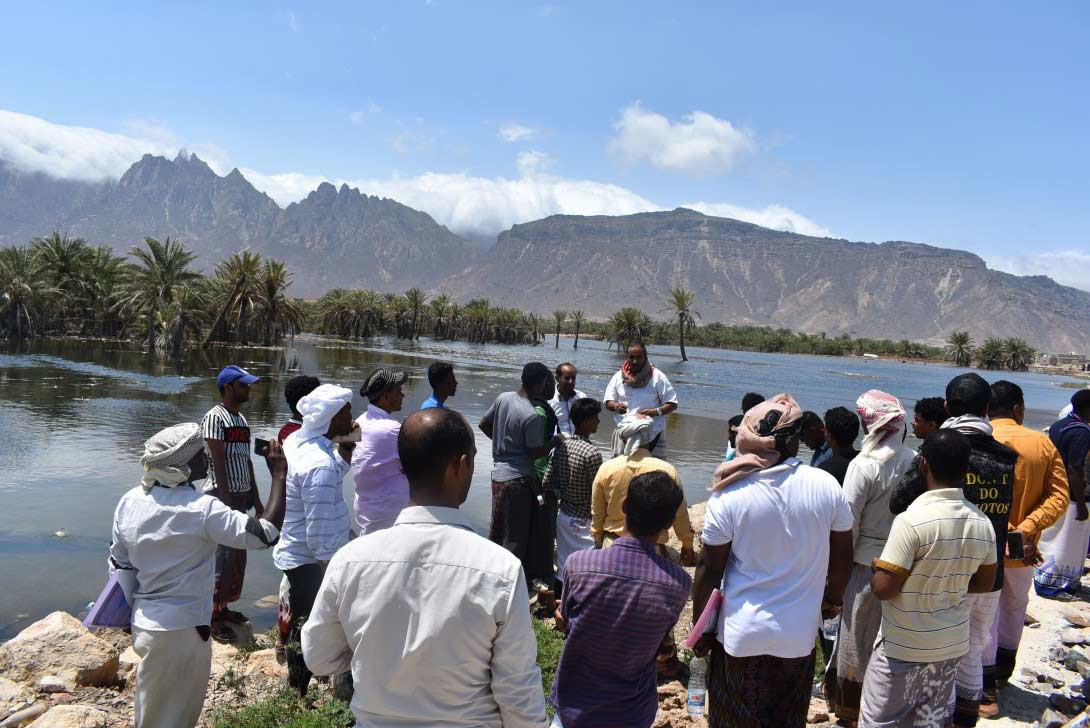
Another key development for us in relation to small grants was the establishment of the Trevor Poyser Species Conservation Fund. Trevor Poyser was a keen supporter of OSME, and as the joint founder of the renowned publishers T & AD Poyser, published a number of books of great value to our region, including the Birds of the Middle East and North Africa. Very sadly Trevor died in his nineties in 2018 but he kindly left us a significant legacy to spend on research and conservation within the OSME region. At the OSME Summer Meeting and AGM we announced the Trevor Poyser Species Conservation Fund in his memory. One award will be made each year and the first grant will be announced in early 2020.
The Summer Meeting was again held at the British Trust for Ornithology (BTO) headquarters in Thetford, and included a series of excellent talks from Derek Robertson, Guy Kirwan, Kabir Kaul, Elaine and Peter Cowan. We continued our offer to OSME corporate members to present a talk on a birding destination, and the talk (and stunning photographs) on birding in Kazakhstan by Vaughan and Svetlana Ashby (Birdfinders) went down well with attendees. At the Annual General Meeting (AGM) we were posed two questions which Council have been considering and will report back in 2020. Firstly, the role of OSME Vice-presidents and secondly on establishing a carbon off-setting scheme.
We continued with our enhanced stand at the British Birdfair at Rutland Water in August and this continued to be well received. As always, the Birdfair is an excellent opportunity to meet existing members and supporters, as well as to promote OSME and its work to new ones. We took the opportunity at the Birdfair to announce the launch of the Youth Development Fund and many positive discussions were held about our approach to engage the next generation of bird enthusiasts in the region. A huge thanks to Ian Thomson (Head of RSPB Investigations in Scotland) for representing OSME in the annual Bird Brain contest. Ian came a very respectable second with OSME receiving £500 that will be used to support projects via the Conservation Fund.
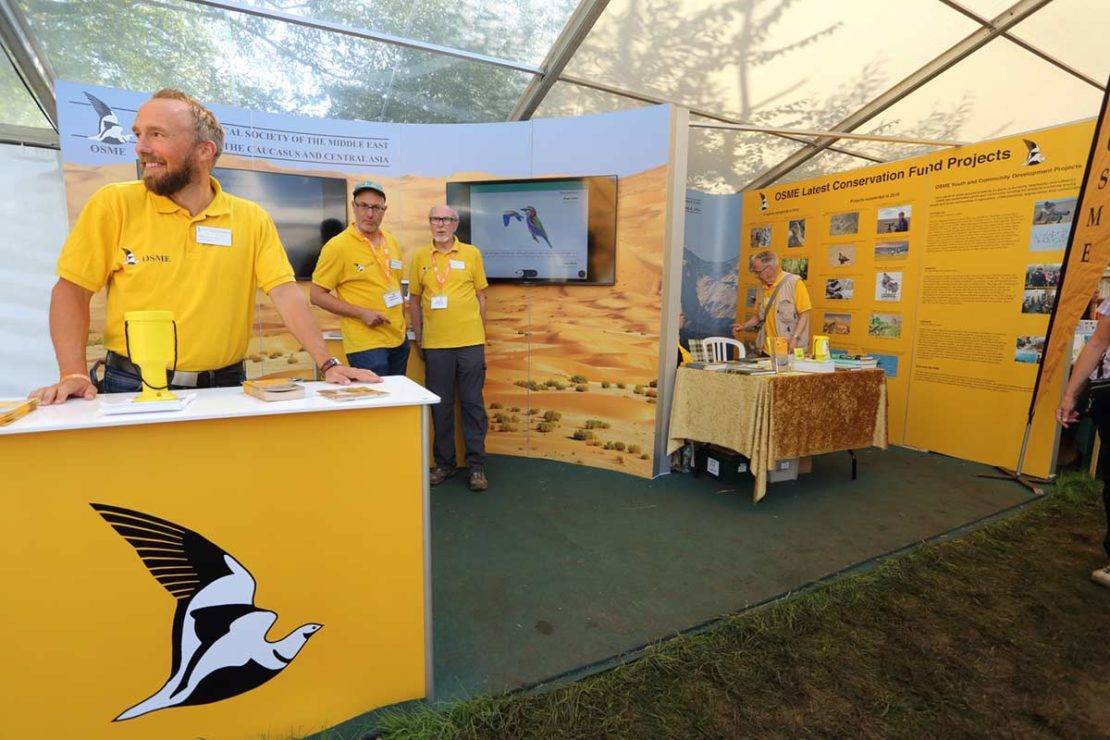
In September we also had a stand at the Spurn Migration Festival, although it was primarily un-manned; many thanks to Paul Stancliffe, Nick Moran and Richard Porter for keeping an eye on interest and answering any questions. In 2020 we plan to have a manned stand at both the Spurn and Falsterbo bird migration festivals.
After more than 10 years, Peter Cowan stepped down as Editor of Sandgrouse early in the year after overseeing issue 41(1). OSME were delighted that Dr Paul Donald agreed to take over the Editor’s role and he worked closely with Peter to enable a successful hand over of the Editorship. Peter’s significant contribution to OSME was recognised at the summer meeting, where Council presented Peter with a print of his favourite Sandgrouse cover from 2014 – Cream-coloured Coursers taken by Amir Ben Dov. Sadly, Peter passed away after a short illness on 3 August (an obituary will appear in the next issue of Sandgrouse). During the year we also started to provide Sandgrouse in a high quality digital format which is available to members who prefer to receive their journal electronically. A digital version will enable us to save on ever increasing postal charges as well as ensure that members from countries with unreliable postal services continue to reliably receive their journal. By the end of the 2019 more than 100 members had opted to receive Sandgrouse digitally.
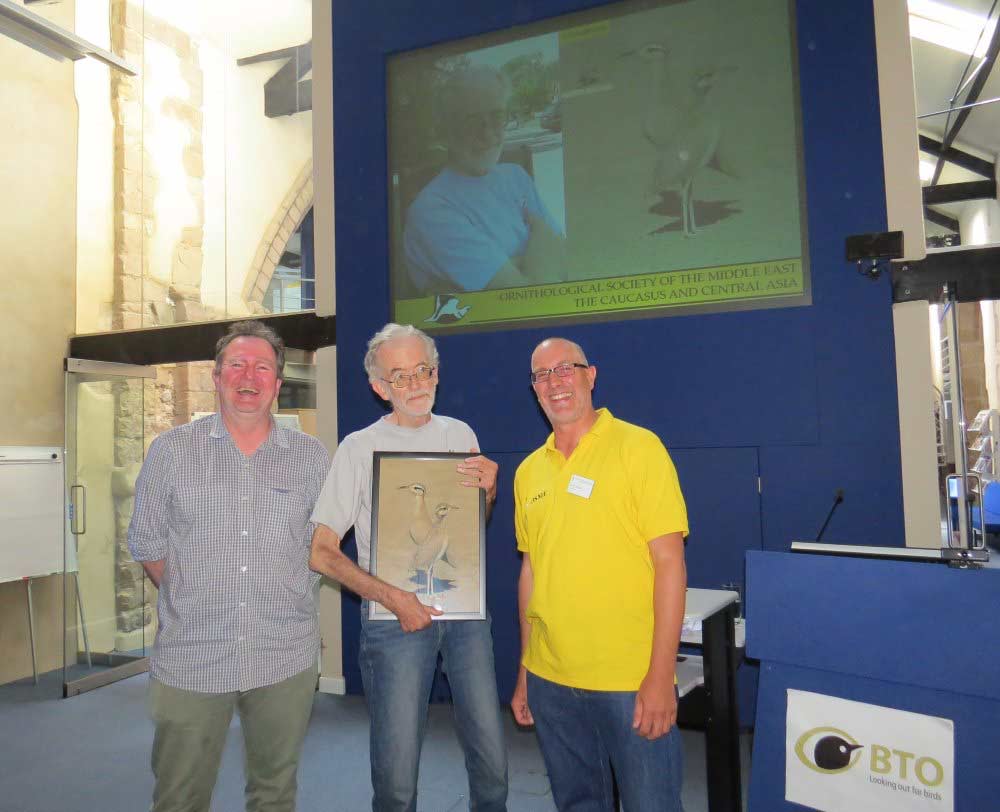
The OSME Facebook page continued to grow throughout 2019 and reached the 3,000 follower milestone on the eve of 2020. Guest articles from the field, as well as those that linked to the ‘I Love Nature’ blog series on the website were especially popular. Our Twitter account reached more than 4,450 followers. We continue to post updates on the OSMEBirdNet Yahoo discussion group but changes to the functionality limits the amount of information that can be posted. We are keen to utilise other social media outlets such as Instagram and YouTube but currently lack the capacity and expertise on OSME Council. Guest blogs, co-ordinated by Richard Porter, are posted regularly, and offers of content for the website are always welcome, so please contact us if you would like to discuss a possible contribution.
Taking OSME forward
At our Council meeting in November we started planning for the upcoming decade and agreed that OSME would continue to grow our small grants programmes and seek new ways to build on our recent record expenditure. A key area that we will focus on is the subject of bird migration and connecting countries across the OSME region.
The last few years have been exceptionally busy for OSME and have seen the delivery of a number of substantial projects. I’d like to take this opportunity to thank all OSME Council members who have worked hard supporting these projects as well as the day-to-day running of the society. Much of what we have achieved in the last 12 months and more is down to their sterling efforts.
Finally, on behalf of OSME Council, a huge thanks to all OSME members and supporters who continue to contribute to our work in so many ways. We are always looking for people to become OSME Council members to help with the running of the society, so please get in contact with me if you would like to discuss how you can help. If you have any comments on the work of OSME, or would like t support our work, then please feel free to contact me by email at chairman@osme.org.
Rob Sheldon, Chairman, OSME
